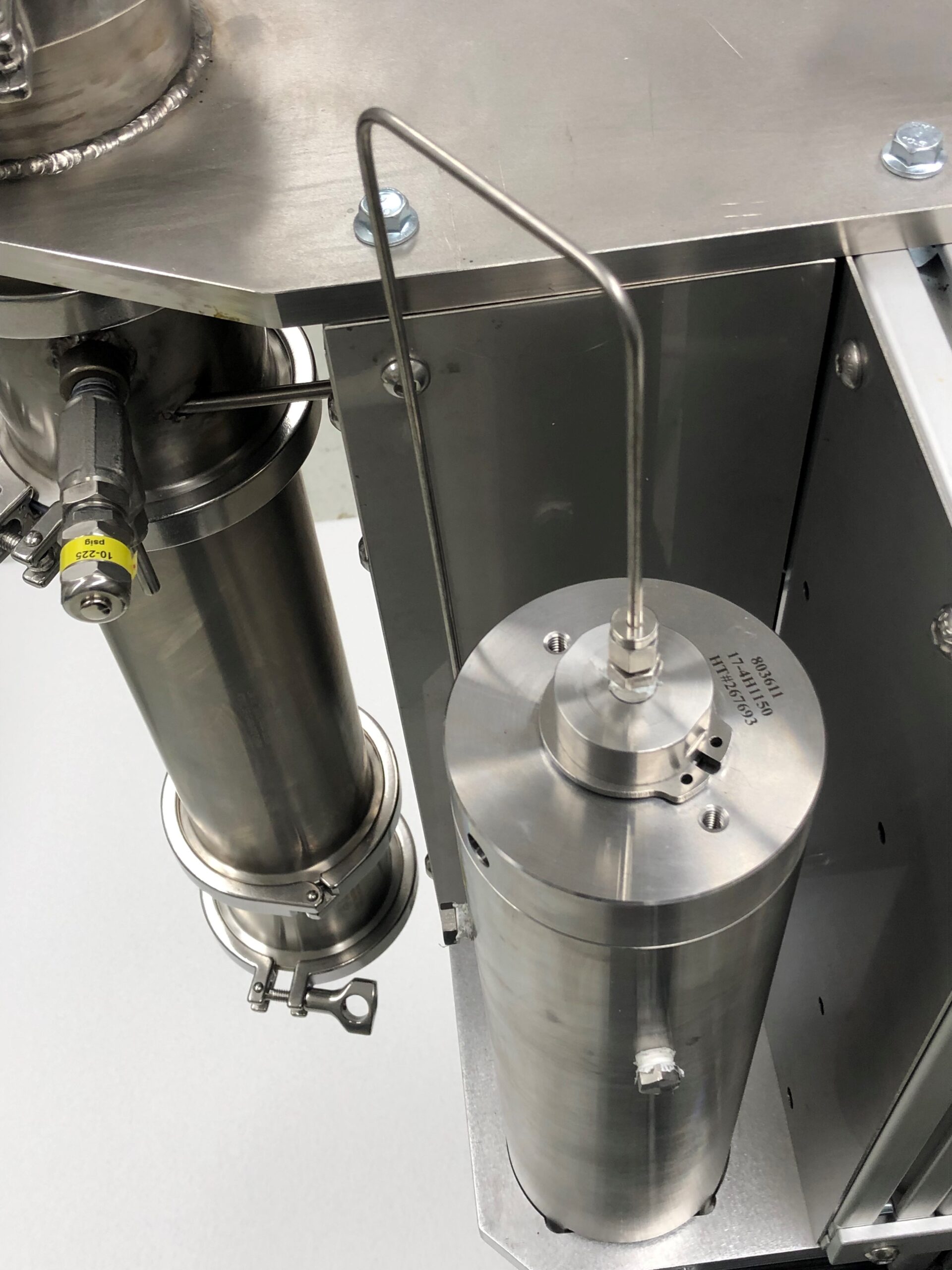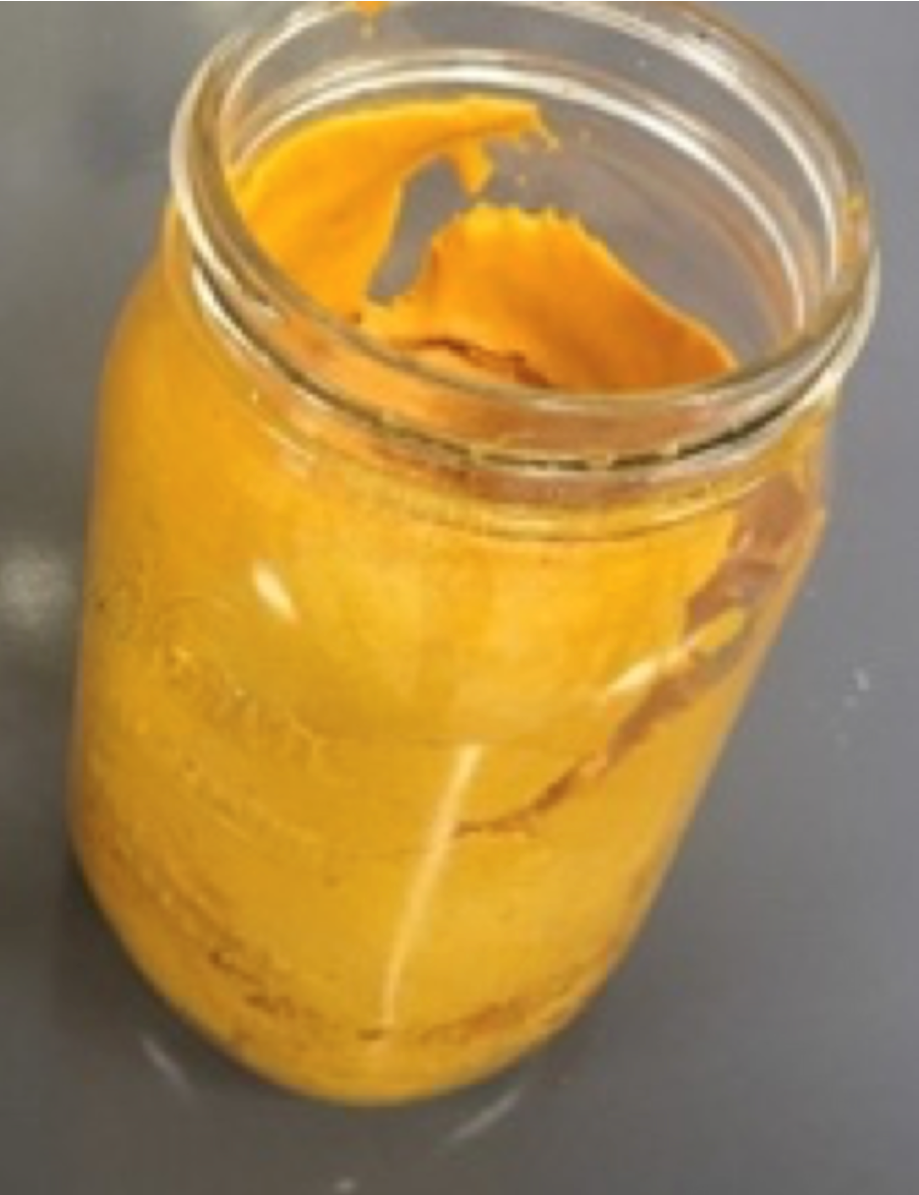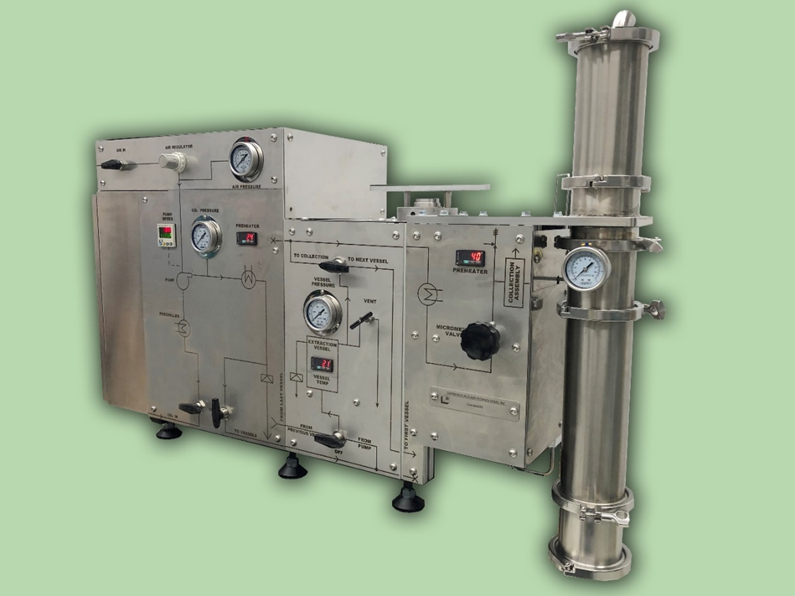SFT-SP Series Supercritical Fluid Processors
- Fast and Efficient Extraction of Natural Products
- Multiple Configurations to Meet Your Processing Needs
- High Flowrates and Pressures to Maximize Yield and Processing Efficiency
- Wide Pressure & Temperature Range for Supercritical and Subcritical Operation
- Efficient Liquid CO2 Pumps & Chiller
- ASME Code Compliant Vessels and Components, ISO Certified, CRN Stamp, GMP Compliant
- CO2 Recycle, Raw Material Bags, Sample Baskets, Sample Loading Fixture, Additional Separators, Robot-Coupe Blixer Grinders for Sample Preparation, Co-Solvent Capability are Optionally Available
- Complete Start Up Kits Included and 24/7 Technical Support Available
The SFT-SP Series Supercritical Fluid Processors were developed with over 27 years of experience in building supercritical fluid CO2 extractors to serve the pharmaceutical industry, government agencies and university researchers. The speed and efficiency is of prime importance especially for natural product extraction. The SFT-SP Series Supercritical Fluid Processors are able to process more feedstock per hour because we have designed this system to offer the highest flowrates available resulting in more liquid CO2 flow through your material, generating quicker and more complete extractions.
Multiple Configurations Available to Meet Your Processing Needs
SFT-SP1100
SFT-SP1100 is a powerful extraction system at an economical price. The system is suited for companies entering the extraction segment, or for those wanting to supply company owned dispensaries with Hemp or Cannabis oils. Flexibility includes both subcritical and supercritical CO2 extractions.
- Flow Rates up to 200mls/min (176g/min) of Liquid CO2
- 10,000 psi (689 bar, 69 MPa)
- Ambient to 120°C
- Upgrade to 3 x 1 Liter at any time with add-on modules
- ASME Code Compliant Vessels and Components, ISO Certified, CRN Stamp, GMP Compliant
- CO2 Recycle, Raw Material Bags, Sample Baskets, Sample Loading Fixture, Additional Separators, Robot-Coupe Blixer Grinders for Sample Preparation, Co-Solvent Capability are Opti$
- Complete Start Up Kits Included and 24/7 Technical Support Available
SFT-SP3100
SFT-SP3100 offers full cascade mode of operation. process biomass quickly, with minimal maintenance and downtime. Built as a midrange system, it has plenty of flexibility, including both subcritical and supercritical CO2 extractions.
- Flow Rates up to 200mls/min (176g/min) of Liquid CO2
- 10,000 psi (689 bar, 69 MPa)
- Ambient to 120°C
- Additional Separators Available
- ASME Code Compliant Vessels and Components, ISO Certified, CRN Stamp, GMP Compliant
- CO2 Recycle, Raw Material Bags, Sample Baskets, Sample Loading Fixture, Additional Separators, Robot-Coupe Blixer Grinders for Sample Preparation, Co-Solvent Capability are Opti$
- Complete Start Up Kits Included and 24/7 Technical Support Available
SFT-SP3500
SFT-SP3500 is compact and powerful with efficient liquid CO2 pumping utilizing a CAT type liquid CO2 pump and pre-chiller and flowrates up to 1500 mls/min (1250 g/min). Full CO2 Recycle is included. Ideal for CBD Oil Extraction.
- Flow Rates up to 1500mls/min (1250g/min) of Liquid CO2
- 8,000 psi
- Ambient to 120°C
- Touchscreen Display
- Customization Available
- CO2 Recycle Included
- ASME Code Compliant Vessels and Components, ISO Certified, CRN Stamp, GMP Compliant
- CO2 Recycle, Raw Material Bags, Sample Baskets, Sample Loading Fixture, Additional Separators, Robot-Coupe Blixer Grinders for Sample Preparation, Co-Solvent Capability are Optionally Available
- Complete Start Up Kits Included and 24/7 Technical Support Available
Contact us to discuss your processing needs!
Contact UsFULL CO2 RECYCLE FOR SFT-SP1100 and SFT-SP3100
Full CO2 RECYCLE FOR SFT-SP1100 and SFT-SP3100
Unit allows the recycling of 200 grams per minute (230mls/min.) of process stream CO2. Utility required is a standard 115V single phase wall outlet. 1.5liter separator vessel with short filter element to allow for 500ml of resin/oil collection in bottom. Filter bowl has bottom drain allowing for draining during run if material is flowable. Accumulator Volume 2,250ml with Site Glass to observe liquid CO2 level. Thermoelectric Peltier Cooling Assembly provides final cooling of condensing CO2 and heat material entering separator.
Robot Couple Blixer3
Grinding plant material will increase the surface area and load of material into the extractor increasing extraction efficiency. The grinder performs particle reduction fast and efficiently and will grind 300-400 grams of dried trim/flower down to approximately 200 microns in 3-4 seconds
Robot Couple Blixer 23
- 6 HP, 2 Speed Grinder
- 100% Stainless Steel Appliance with 3 built-in legs
- Control Panel with flush buttons and digital timer from 0-15 minutes
- Removable and tiltable 24 Qt stainless steel bowl
- Bowl-base Assembly with 2 detachable and height adjustable fine serrated blades included
- 208-220 VAC 3-Phase, 50/60Hz
HEMP AND CANNABIS SPECIFIC PACKAGES AVAILABLE
Contact Us
The SP Series CO2 Extractors excel in obtaining high yields in a short time. Speed and efficiency are always of prime importance. These extractors process more feedstock per hour than much larger, more costly equipment. Operating at high flow rates at high pressure results in a complete extraction is the shortest time possible.
Hourly Processing Capability and Yields for Hemp and Cannabis
| Configuration CannabisSFE System | Feedstock Processed Per Hour | CBD Oil Output (g/hr) |
THC Oil Output (g/hr) |
| 1x1 Liters | 1.5lbs/0.68kg | 47 | 122 |
| 3x1 Liters | 2.5lbs/1.13kg | 79 | 204 |
| 3x5 Liters | 12.5lbs/5.66kg | 397 | 1,021 |
| 3x20 Liters | 50lbs/22.67kg | 1,589 | 4,086 |
| 3x40 Liters | 100lbs/45.35kg | 3,178 | 8172 |
| 3x60 Liters | 150lbs/68kg | 4,767 | 12,258 |
Supercritical Fluid Technologies, Inc introduces our new COLOR REMEDIATION MODULE
Our proprietary color remediation module (CRM) removes up to 99.5% of chlorophyll from the crude oil while the extraction is taking place, not as a post-processing step. CO2 extraction of cannabis and hemp at high pressures (>5000 psi) offers the dual advantage of high yields and short run times. In the past, the drawback to high pressure extraction has been the presence of chlorophyll in the extract. Chlorophyll makes the oil dark and may impart an undesirable taste. While post processing utilizing short path distillation or flash chromatography can remove chlorophyll, there are significant costs associated with doing so. Those methods require additional capital to purchase that equipment, increased operation costs (labor, utilities, solvents) and demands more operator training and increased processing time.
If the goal is to obtain an isolate (THC or CBD), these methods are appropriate and required, but today there is an increasing awareness and desire among more sophisticated consumers for the benefits that the full entourage effect provides. It comes from the various cannabinoids and their interactions. The combination of these naturally occurring compounds found in the plant imparts much of the desired therapeutic effect. Additionally, the presence of these compounds can minimize undesirable side effects such as drowsiness or anxiety.
The SFT Color Remediation Module (CRM) removes 99.5% of the chlorophyll from the oil in a single step while the extraction is taking place. While in the supercritical state, the CO2 along with the extract flows through a module containing a proprietary, silica-like material that has a high affinity for chlorophyll. Under normal operating conditions extractors can process 60 kg (132 lbs) of feedstock with each 250 gram load of this absorbent.
The product is a light-colored, full spectrum oil, with almost no loss of cannabinoids. The extract will have a concentration of 60-70% THC/THCA for Cannabis or 60-70% CBD/CBDA for Hemp. Maintaining the natural balance between the decarboxylated vs acid form of THC and CBD is important because the acid form imparts the therapeutic benefits in the final product. Retaining the full range of cannabinoids present in the plant while removing only the chlorophyll allows the natural carotenoids and flavors/terpenoids to shine through.


Application Notes
AP-01 -Cannabis-Extraction-by-Supercritical-Carbon-Dioxide-Effects-of-Extraction-Parameters
AP-01 -Cannabis-Extraction-by-Supercritical-Carbon-Dioxide-Effects-of-Extraction-Parameters
Carbon Dioxide (CO2) extraction of cannabis is becoming more prevalent as the extract market grows with the spread of medical and recreational legalization. However, due to the historically underground nature of working with the substance, little true scientific experimentation and process development has occurred; even less has been published. Those new to the field have limited guidance.
The following is a compilation of the process learnings regarding selection of extraction parameters that Supercritical Fluid Technologies (SFT) customers’ companies who are currently working in the CO2 cannabis extraction field have shared with us. Due to the proprietary nature of each company’s specific process, the material here will be presented in a generic way that is applicable to the majority of processors.
Click Here to Download PDF
AP-02 – Cannabis-Extraction-by-Supercritical-Carbon-Dioxide-Selection-and-Preparation-of-Feed-Stock
AP-02 – Cannabis-Extraction-by-Supercritical-Carbon-Dioxide-Selection-and-Preparation-of-Feed-Stock
Carbon Dioxide (CO2) extraction of cannabis is becoming more prevalent as the extract market grows with the spread of medical and recreational legalization. However, due to the historically underground nature of working with the substance, little true scientific experimentation and process development has occurred; even less has been published. Those new to the field have limited guidance.
The following is a compilation of the process learnings regarding feedstock selection and preparation that Supercritical Fluid Technologies (SFT) customers’ companies currently working in the CO2 cannabis extraction field, have shared with us. Due to the proprietary nature of each company’s specific process, the material here will be presented in a generic way that is applicable to the majority of processors.
Click Here to Download PDF
AP-03 – Cannabis-Extraction-by-Supercritical-Carbon-Dioxide—Dewatering
AP-03 – Cannabis-Extraction-by-Supercritical-Carbon-Dioxide—Dewatering
All Cannabis feedstock contains water, even that which is properly dried and cured. Removing this water from the extract after processing raises the cannabinoid concentration of the extract, prevents it from spattering when consumed directly though vaping or in a rig, presents a cleaner taste to the consumer, and enables a more attractive appearance.
CO2 processing creates extract that will be laden with dry ice. Depending on the equipment and processing conditions the extract will need to be de-gassed and/or heated prior to dewatering.
Click Here to Download PDF
AP-5 — Naturally Occuring and related Synthetic Cannabinoids and their Potential Therapeutic Applications
Ahmed M. Galal1,*, Desmond Slade1, Waseem Gul1,5, Abir T. El-Alfy2, Daneel Ferreira1,3 and Mahmoud A. Elsohly1,4,5
Abstract: Naturally occurring cannabinoids (phytocannabinoids) are biosynthetically related terpenophenolic compounds uniquely produced by the highly variable plant, Cannabis sativa L. Natural and synthetic cannabinoids have been extensively studied since the discovery that the psychotropic effects of cannabis are mainly due to ! 9-THC. However, cannabinoids exert pharmacological actions on other biological systems such as the cardiovascular, immune and endocrine systems. Most of these effects have been attributed to the ability of these compounds to interact with the cannabinoid CB1 and CB2 receptors. The FDA approval of Marinol®, a product containing synthetic ” 9-THC (dronabinol), in 1985 for the control of nausea and vomiting in cancer patients receiving chemotherapy, and in 1992 as an appetite stimulant for AIDS patients, has further intensified the research interest in these compounds. This article reviews patents (2003-2007) that describe methods for isolation of cannabinoids from cannabis, chemical and chromatographic methods for their purification, synthesis, and potential therapeutic applications of these compounds.
Frequently Asked Questions
What are the benefits of pumping CO2 in a liquid phase rather than a gas phase?
What are the benefits of pumping CO2 in a liquid phase rather than a gas phase?
The key parameter you desire to optimize for the extraction of natural products is throughput. Therefore, our family of Supercritical CO2 processing platforms from the CannabisSFE up to the NPX SFE units process with liquid CO2. Liquid CO2 at any given pressure and temperature of operation has a higher “loading capacity” of extract. Liquid CO2 can hold more extract than gaseous CO2 and therefore provides a more efficient extraction. The most efficient extraction processes offering the highest yields are always liquid CO2. Other systems that use gaseous CO2 claim a higher flow rate, but if you convert a gaseous CO2 flow rate of say 5L/min of gaseous CO2, it is only 12.5 mls/min of liquid CO2, so the systems that claim to have a 5 L/min flowrate of gaseous CO2 do not provide fast processing times of your raw materials.
What is Cascade Operating Mode?
What is Cascade Operating Mode?
A: You charge all 3 vessels to start the process. Depending on micron size (200 micron is recommended for maximum extraction efficiency), the vessels can hold the following amounts;
- CannabisSFE 3×1 = 400-454 grams
- CannabisSFE 3×5 = 2000-2200 grams
You begin CO2 flow through vessel #1 into vessel #2 and then into the collection vessel. After about 30 minutes, vessel #1 is fully extracted and vessel #2 is one half extracted.
Next, you switch the system to flow CO2 through vessel #2 into vessel #3, and then into the collection vessel. In about 30 minutes, vessel #2 is fully extracted and vessel #3 is one half extracted.
While in this step, you unload processed feedstock from vessel #1 and reload a fresh charge into vessel #1. At completion of the vessel #2 extraction and the reloading of vessel #1 you switch CO2 flow to go through vessel #3 into vessel #1 and then into the collection vessel.
Repeat the process. You are now operating in cascade mode, which is significantly more efficient than any other extraction mode.
Look at attached P&ID (Piping and Instrumentation Design) to better visualize the valve and flow path for this operation mode.
How Does Pressure and Temperature Effect Extraction of Cannabinoids?
How Does Pressure and Temperature Effect Extraction of Cannabinoids?
THC and other cannabinoids are best soluble at 4500-5000 psi. The CannabisSFE has a significant advantage vs. competitior’s operating pressure, which enhances the solubility of the cannabinoids in the CO2. Therefore, we can extract very fast.
What is Our Extraction Cycle Times for the CannabisSFE Family of Extractors?
What is Our Extraction Cycle Times for the CannabisSFE Family of Extractors?
The cycle time is 20 minutes for the CannabisSFE1x1L and CannabisSFE3x1L systems. You can figure a 30-minute cycle time for the 3x5L and larger systems. The functions that must be done are: load raw materials, pressurize, cycle, depressurize, and reload with raw materials.
Does THE CannabisSFE system meet ASME Code?
Does THE CannabisSFE system meet ASME Code?
The vessels used in our CannabisSFE 3×1 and CannabisSFE 3×5 systems do not require ASME stamps according to ASME regulations, due to their smaller size. However, both vessel sizes used (1000ml and 5000ml) meet the strict ASME Code parameters. Documentation of this design point can be provided.
Does the CannabisSFE 3×1 System Come with a PE Engineering Certificate?
Does the CannabisSFE 3×1 System Come with a PE Engineering Certificate?
SFT works with various accredited PE Engineers, who are able to sign off on our design to meet local municipal codes. Sometimes the local municipality requires a design review, while for others, they only require a review of the Piping and Instrument Design (P&ID) flow diagrams. We work closely with the customer to provide the support they need.
Do you make a system larger than 3×1 liters?
Do you make a system larger than 3×1 liters?
Yes, Supercritical Fluid Technologies provides extraction systems specifically designed for the Cannabis market with the CannabisSFE 3x5000ml platform and with our NPX SFE Processing Platform configured for Cannabis Extraction you can specify 3x 10L, 3x 20L, 3x 40L, and 3x60L. Both the CannabisSFE 3x5000ml and he NPX family of products have significantly higher flow rates of liquid CO2 and full closed loop recycle to maximize product throughout and yields.
Why is SCF CO2 better than Ethanol Extraction?
Why is SCF CO2 better than Ethanol Extraction?
Ethanol is what is called a “polar” solvent and it will be more hydrotropic, meaning it will want to bind to the water-soluble components of the plant. The result is a less pure, and a generally less potent end product that needs more post processing than CO2 extracts. Most ethanol extraction proponents argue that these drawbacks can be avoided by keeping very cold temperatures below -5F. This is true, but what needs to be considered is the additional work to make the crystalline is costly and hard to scale up for production.
Ethanol Pros -Generally more lenient storage requirements for large amounts -If done properly, elimination of a de-wax step
Ethanol Cons -polar solvent and will pull more water-soluble components like chlorophyll -higher boiling point making recovery slower and more difficult -post processing requires more labor. The CannabisSFE 3×1 allows continuous extraction with an easy to use system.
Why is CO2 Extraction Better than Butane / Solvent Extraction?
Why is CO2 Extraction Better than Butane / Solvent Extraction?
BHO Basics:
Butane hash oil, also known as BHO, is a cannabis-derived oil made using butane as the solvent. In a basic BHO extraction the first step, known as a ‘wash,’ involves passing butane through a column containing the plant material. The butane strips the cannabinoids, terpenes, waxes, lipids, and other chemical compounds from the plant material. The butane must then be separated, or ‘purged’ from the extracted plant oil. This can be done through heating, by vacuum, or through some combination of the two.
BHO extraction time can vary depending on the size and model of the extraction equipment, though typical run times average from 5-10 lbs of plant material processed per hour. Excluding the price of Butane, you must factor in the cost of ventilation, or a protected explosion proof environment. Although the install can pose hazards, closed loop systems significantly decrease operating risks for owners.
Butane is a highly flammable colorless gas. The flash point, or the lowest temperature at which vapors will ignite when given an ignition source, is -60 °C (−76 °F). Thus, a spark from a light switch, an electric hand tool, or even a static charge can trigger an explosion. Furthermore, the autoignition temperature, or the lowest temperature at which a substance will spontaneously ignite in normal atmospheric pressure without an ignition source, is 288 °C (550 °F), which is a temperature easily reached by a stovetop or oven element.
The National Fire Protection Association has assigned a flammability rating of 4 (on a scale of 0 to 4), classifying n-butane as extremely hazardous. For these reasons, most states that allow for BHO extraction systems require a properly ventilated Class 1/Division 1 explosion-proof room. Both the room and BHO extraction system must be inspected by a certified industrial hygienist or engineer to be sure they conform to regional and municipal codes and nationally recognized accreditations. Workers must be adequately trained and understand the hazards associated with working with closed loop BHO extraction systems.
Even with proper training, equipment, and environment, BHO extraction systems can be dangerous. In 2014 in the US, there were 3 BHO extraction explosions, 30 injuries, and 32 explosion related deaths. This is in comparison to 12 explosions and 18 injuries in 2013.
Supercritical CO2 Extraction (SCE):
Supercritical CO2 Extraction is quickly becoming the preferred solvent in the Cannabis and Hemp industry. Despite having a costlier initial setup, CO2 is cheaper than butane, making the system more cost-effective to run. As CO2 is produced by natural means, if it is released back to the environment it does not have a negative impact on the atmosphere, making it a much safer and environmentally responsible choice than BHO. SCE does not require the same explosion-proof facility setup that BHO does, or safety equipment and training for operators to work with.
CO2 is also non-toxic- it is a natural waste product from human bodies and fermentation. Due to this and its gaseous state at atmospheric pressure, all extracts made from SCE are pure and completely clean of any potential toxic or heavy metal residues that can be left behind in BHO.
The conditions of a SCE system can be manipulated to fractionate desired compounds like terpenes, cannabinoids, waxes and esters out of the oil mixture in differing concentrations. This also provides the opportunity to refuse undesired compounds like chlorophyll from the extract. Manipulation in this manner makes SCE the perfect option for drug manufacturers looking to obtain higher concentrations of different biologically active components.
CO2 has solvency power at a much lower set of extraction parameters in comparison to other solvents, and therefore can extract compounds that usually are degraded at higher temperatures or pressures such as terpenes. Carbon dioxide extracts are accordingly stronger in aroma and flavour and bear a profile that most closely resembles the original plant. These extracts are preferred in market as their scent and flavouring are highly valued by purveyors.
SUMMARY:
Although BHO products may appear to be easy to make, the underlying risk involved with the extraction process and requirements for a Class 1/Division 1 explosion-proof room are additional factors that must be taken into consideration. On the other hand, CO2 extraction provides a cleaner and safer option for operators to process cannabis, with the bonus of being able to produce a full spectrum cannabinoid-rich product with an enriched perceived value.
Why Is CO2 Better Than Ethanol Extraction for Hemp?
Why Is CO2 Better Than Ethanol Extraction for Hemp?
Although the cost of Ethanol equipment for larger scale extractions is cheaper than similar scale SFE equipment, the extract that you get from ethanol extraction requires much more post-processing because you are left with a very sticky resin. CO2 does not require as much post-processing and is a better choice than ethanol.
Cannabis/Hemp Fractionation with SCF CO2
Cannabis/Hemp Fractionation with SCF CO2
By extracting with CO2 only, it was possible to effectively separate the dark plant pigments and light volatile oils from the bulk extract (Figure 6). By generating three distinct fractions from a single extraction, extraction facilities are able to generate multiple processing streams and products from a single extraction. For example, in this scenario the dark CS1 fraction, ~20% of the total extract, was directed towards a CBD-A purification pathway encompassing chlorophyll and wax removal followed by SFC purification. Fractions 2 and 3 were combined and directed towards a more traditional pathway involving only wax removal.
The flexibility of CO2 extraction allowed for the generation of three distinct hemp extract fractions from a single extraction. Since there is variability inherent in working with natural products, the ability to generate multiple distinct processing streams from a single extraction is a major benefit to high pressure SFE with fractionation; this allows processors to develop specific workflows for a particular consistent desired outcome
























